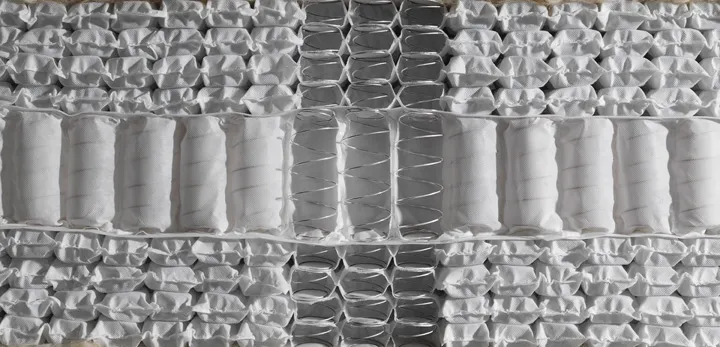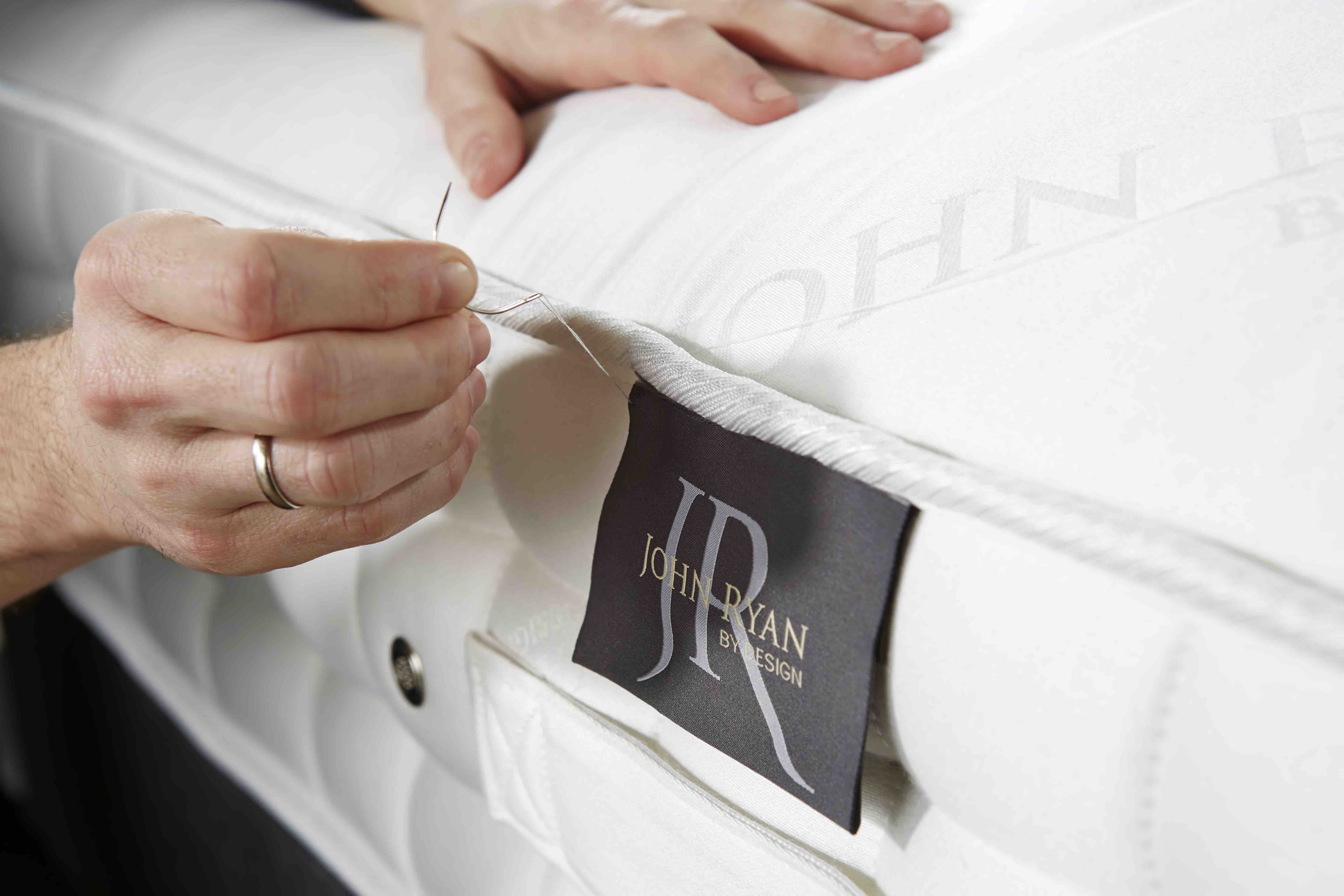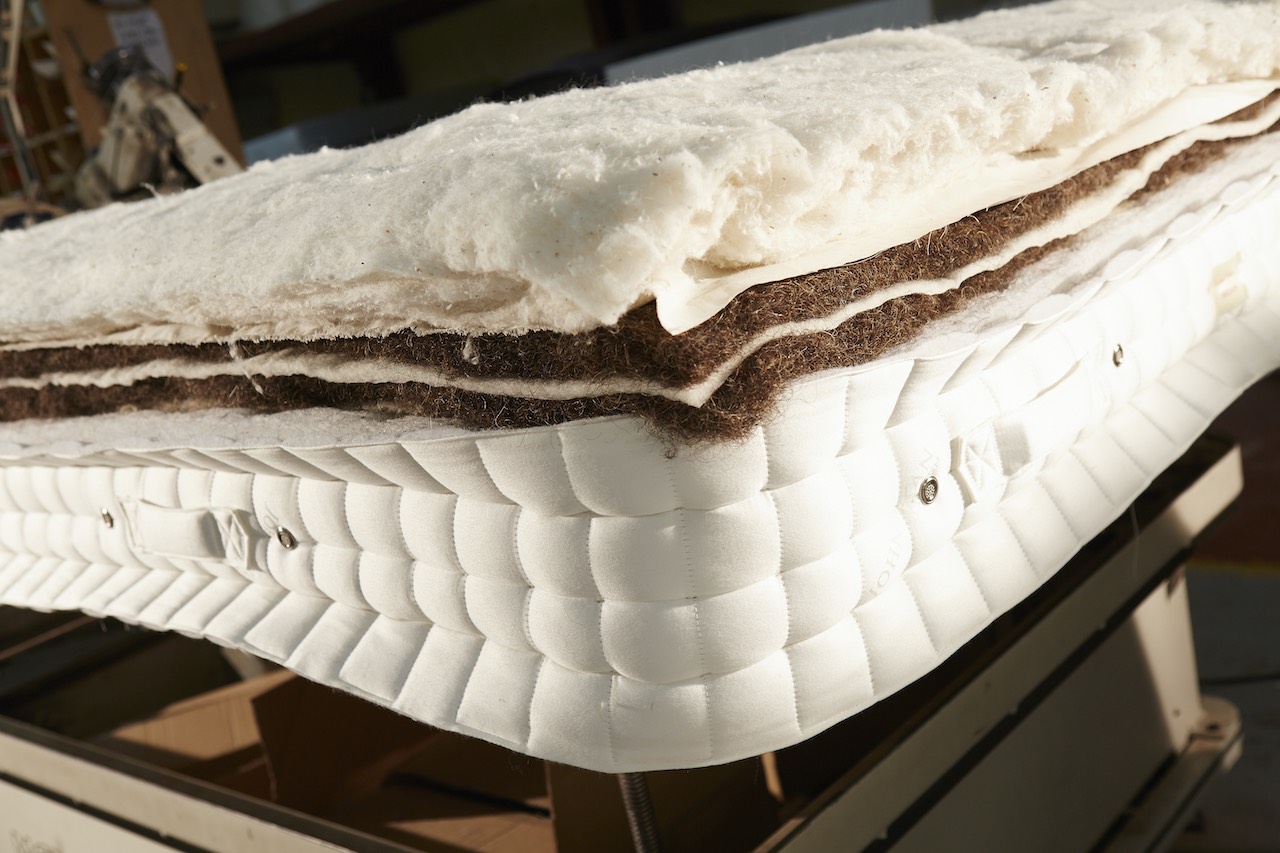Pocket spring size in mattresses & why it matters
I notice that John Lewis are using smaller springs so there are more in their mattresses. In partcular Cortec pocket springs. You say that small pocket springs should be avoided and use larger calico springs.
Can you explain the pros and cons of mattress springs?
Hi Dave,
Many thanks for your comment asking about mattress pocket springs. In particular the differences between the larger more traditional pocket springs and the new tiny micro springs that you see being used in their thousands for beds.
The biggest issue we have with micro and HD mattress springs is that they serve no purpose other than to hyper inflate the mattress spring count. It's a as simple as that. Why do manufacturers use these tiny springs? To compete with each other for spring counts in the thousands.

This is because customers are conditioned to believe that the higher the figure, the more quality, value or benefit such a mattress will have. However, this is simply a marketing spin. To compete in an already saturated market for entry level mattresses.
Some of the best mattresses ever made will have used just 1200 (49mm wide and 16cm long) pocket springs in their mattresses.
A quality pocket spring will be 16cm is usually standard in high-end mattresses. Usually between 6 and 9 turns. Again anything above 6 turns is kind of superfluous. Retailers have made springs longer for marketing. 9 turn 20cm spring are actually really unstable.
We use the same spring type as Vispring. 6 Turns. 16cm long and in 3 different wire gauges. All our Artisan springs are Calico encased and vanadium coated. We avoid shorter micro springs as they compress far too quickly and offer far less support other than inflating the spring count for manufacturers. Let's have a look at the pros and cons of micro springs Dave.
Pros of micro springs:
- Retailers can offer eye-watering spring counts in mattresses (mainly as a sales tool irrespective of the flaws with such springs)
- It helps sell relatively low end / low-quality mattresses
Cons of micro springs:
- Micro springs offer far less support over time as they often completely compress in an instant
- Layering up springs makes them behave inconsistently and leads to them needing to be glued on top of each other to hold them in place
- Each layer of springs reduces the overall space left for natural fibres and upholstery which provide the true comfort feel in a mattress
- Each tiny spring needs its own encasement (usually made of polyester) so the more springs you put in the more of this non-breathable material you add to the mattress unnecessarily
Larger pocket springs, especially those tailored to your bodyweight offer far more progressive support with less additional metal and polyester needed in the mattress. They are fully breathable and should never fully compress (ie overload) like micro springs do. Once a spring fully compresses it fails to give any real support or pushback as its at its load capacity.
Understanding the difference between mattress comfort laters and spring support.
Comfort Layers are the top layers of upholstery in a mattress that provide the ultimate feel of a mattress.
Many people believe the spring tension will provide the overall feel of the mattress. The spring tensions are based entirely on your body weight and won’t give to the actual comfort feel of the mattress. In fact, many bed buyers are missold the wrong spring tension by uneducated salespeople who wrongly advise that the spring tension will give the overall comfort feel of the mattress.
| Bodyweight | Spring tension |
|---|---|
| Upto 16 Stone / 50-101kg | Medium (1.4mm) |
| 16 Stone / 101kg Upwards | Firm (1.6mm) |
| Available in Bespoke Products (Please Call) | Soft (1.2mm) |
It's not just pocket spring count that's an important factor when choosing a bed but also the GSM of fibres used for comfort along with mattress detailing Dave.

It’s important to compare based on your price point between mattresses. The mattress buying guides below will help you see what you can expect for each price point with some of the best industry mattress models available.
- What to expect from a £500 Mattress
- What to expect from a £750 Mattress
- What to expect from a £1000 Mattress
- What to expect from a £1250 Mattress
- What to expect from a £1500 Mattress
- What to expect from a £2000+ Mattress
We hope that helps and gives you further mattress buying guidance. If you have any more mattress related questions please get back in touch on [email protected] or 0161 437 4419.
Sleep well!
John & Ryan

Dreaming of the perfect nights sleep?

Newsletter
Enter your email to join our newsletter. We’ll send you occasional news and mattress expertise.


